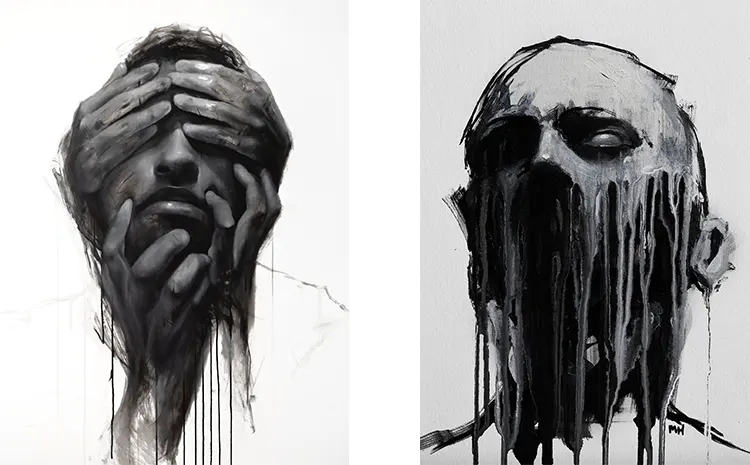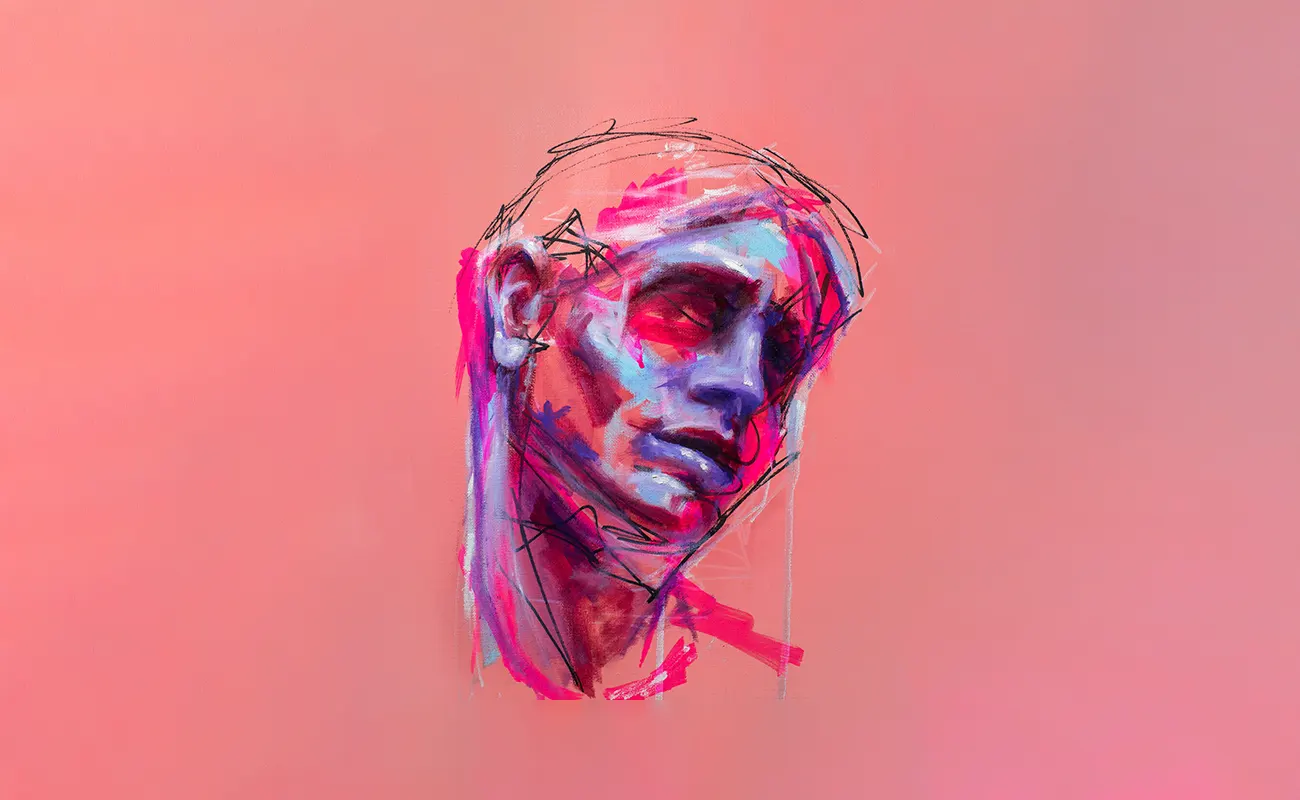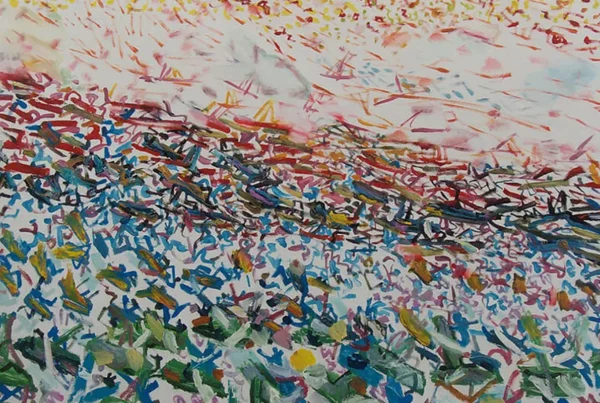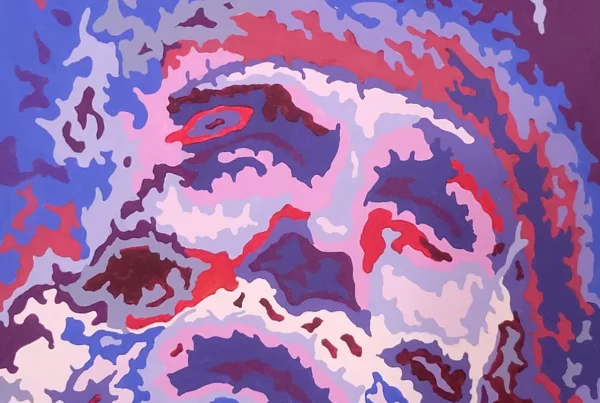“I love the cyclical nature of it, the idea of a season of life and beauty depending on a season of dark and decay.”
From Classroom to Canvas: The Educational Journey of Miriam Hoffmann
Miriam Hoffmann‘s path to becoming a revered portrait artist is as unconventional as it is inspiring. Initially embarking on a career in education, Hoffmann’s professional origins lie far from the art world she now thrives in. This background in education, with its emphasis on understanding and explaining complex concepts, has profoundly influenced her approach to art. Hoffmann’s fascination with the mechanics of learning and cognition has seamlessly transitioned into a unique artistic method, where each stroke and shade is a testament to her inquisitive nature. This curiosity, deeply embedded in her educational roots, drives Hoffmann to explore the depths of human emotion and the intricacies of the human condition through her portraits.
Hoffmann’s foray into the art world was not born out of a childhood passion but rather emerged from the challenges of adulthood and the responsibilities of motherhood. The pandemic, a period of global uncertainty and personal reflection, served as a catalyst for her artistic journey. Seeking a respite from the stress of her new reality, Hoffmann enrolled in an art class, a decision that would unknowingly pivot her career trajectory towards the arts. This serendipitous venture into painting ignited a previously untapped passion, transforming her relationship with art from one of indifference to one of profound engagement and discovery.
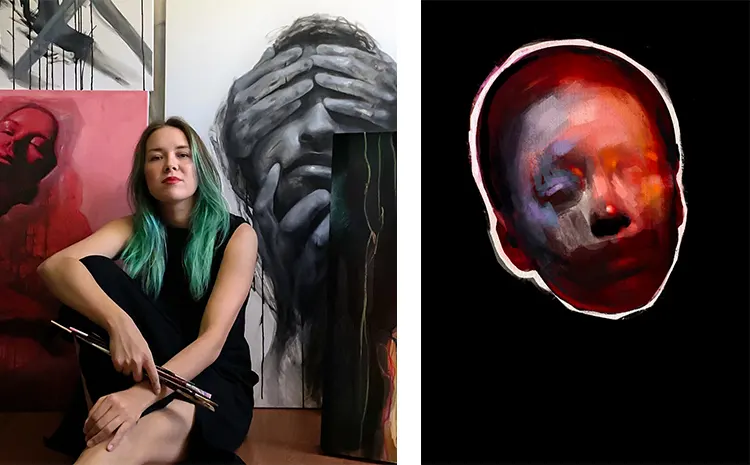
Creative Realism and the Eternal Spring: The Artistic Vision of Miriam Hoffmann
Miriam Hoffmann’s artistic style, which she reluctantly describes as creative realism, defies strict categorization, mirroring the fluidity and dynamism of her creative process. Hoffmann’s reluctance to “put her style in a box” reflects a broader artistic philosophy that values evolution and adaptability. Her works, characterized by a meticulous attention to detail tempered with imaginative flair, navigate the delicate balance between realism and creativity. This balance allows Hoffmann to craft vivid, lifelike portraits that are not just visual representations but are imbued with depth, emotion, and narrative.
Central to Hoffmann’s artistic exploration is the theme of spring, a motif that recurs throughout her oeuvre. For Hoffmann, spring is not just a season but a metaphor for life, renewal, and the cyclical nature of existence. This fascination with spring’s duality—the bloom of life from the decay of death—permeates her work, offering viewers a reflection on the transient yet eternal cycle of renewal. Through her art, Hoffmann invites audiences to contemplate the beauty inherent in transformation and the resilience required to emerge anew from periods of darkness and decay. This thematic focus not only distinguishes Hoffmann’s work but also connects it to broader human experiences and emotions, making her art resonate on a universal level.
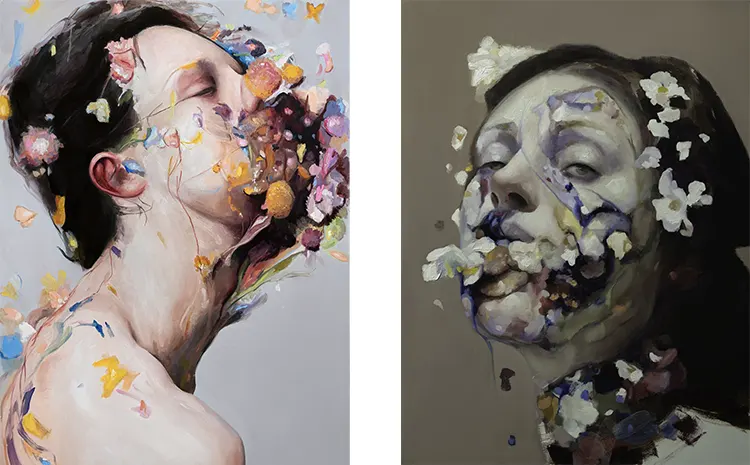
The Sanctuary of Creation: Miriam Hoffmann’s Artistic Haven
In the midst of life’s cacophony, especially with the added whirlwind of motherhood, Miriam Hoffmann has cultivated an oasis of creativity within her home. The presence of three young children could easily be a source of constant interruption, yet Hoffmann has gracefully adapted to these potential distractions, integrating them into her creative process. Her workspace, though simple, is a testament to the essentials of her artistic practice: music, which serves as a backdrop to her creative sessions, soft lighting that casts a serene glow over her canvas, and, most importantly, her favorite paint brushes, which are the conductors of her creative symphony. These elements, though seemingly mundane, are crucial to Hoffmann’s ability to immerse herself in her work, allowing her to sculpt with paint and bring her visions to life.
This environment is not just a physical space but a mental sanctuary where Hoffmann can explore the depths of her creativity undisturbed. The soft strains of music and the warm embrace of the lighting create a cocoon of concentration, enabling her to focus deeply on her art. This sanctuary is where Hoffmann battles with and embraces the chaos of life, channeling it into her portraits. It’s a place where the distractions of the outside world are not barriers to her work but reminders of the life she is capturing on canvas—a life filled with complexity, beauty, and the ever-present dance between order and chaos.
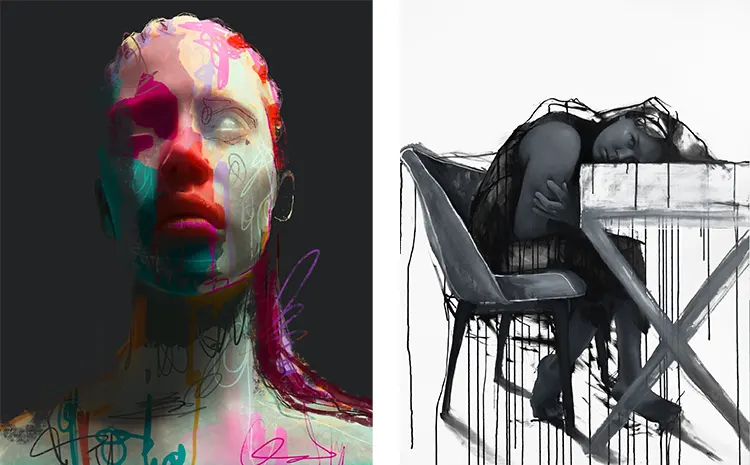
Influences and Inspirations: The Muses of Miriam Hoffmann
The artistic journey of Miriam Hoffmann is one richly woven with the threads of influence from past and present masters. The eclectic list of artists that inspire her—Kim Jung Gi’s dynamic sketches, Jenny Saville’s raw, emotive figures, and Artemisia Gentileschi’s powerful depictions of women—showcases Hoffmann’s admiration for a wide spectrum of styles and eras. This diverse array of influences reflects in Hoffmann’s own work, where the precision of realism meets the fluidity of emotion in a harmonious blend. Each of these artists, in their own way, has contributed to Hoffmann’s understanding and approach to art, providing her with a wellspring of inspiration from which she draws her unique vision.
A piece that holds a particularly special place in Hoffmann’s heart is “Work from Home,” a creation that encapsulates a pivotal moment in her life and career. Born out of the isolation and introspection brought on by the pandemic, this piece is a poignant reflection on the period’s challenges and shifts. For Hoffmann, it represents not just a moment of personal struggle but also one of significant growth and transformation. The significance of “Work from Home” lies not only in its artistic merit but in its embodiment of Hoffmann’s journey—marking a time when art became her anchor, her means of connection, and her path to resilience. Through this piece, and others like it, Hoffmann not only shares her story but also invites others to find solace and understanding within her art.
Miriam Hoffmann’s choice of oil and acrylic as her primary mediums speaks to her desire for a tactile connection with her work, where the act of painting becomes an act of sculpting, shaping the visual and emotional contours of her subjects. This preference underscores Hoffmann’s exploratory spirit, as she continues to push the boundaries of her craft, always seeking new ways to express the depth and complexity of the human experience. Though she humorously acknowledges her less successful forays into watercolor, it’s this willingness to experiment and embrace the imperfections of her journey that defines Hoffmann’s artistic ethos.
